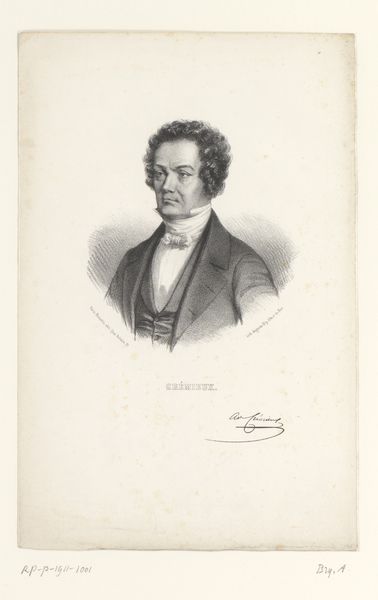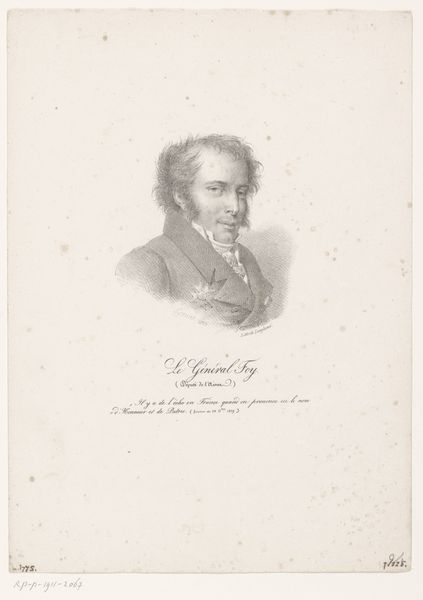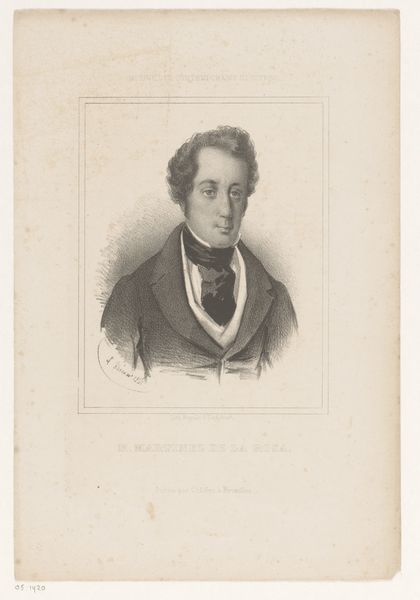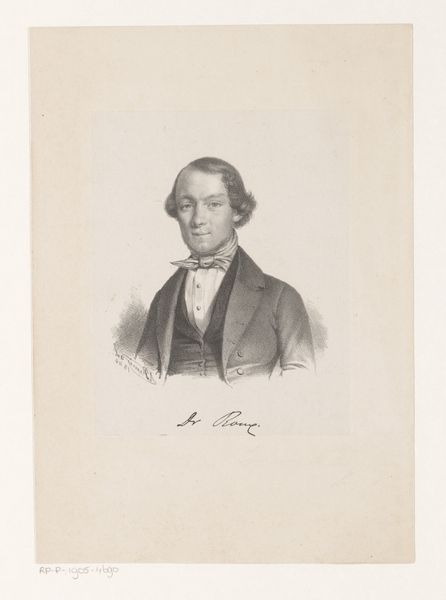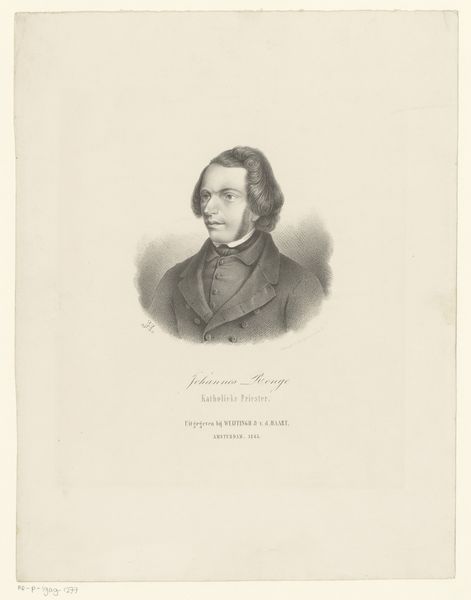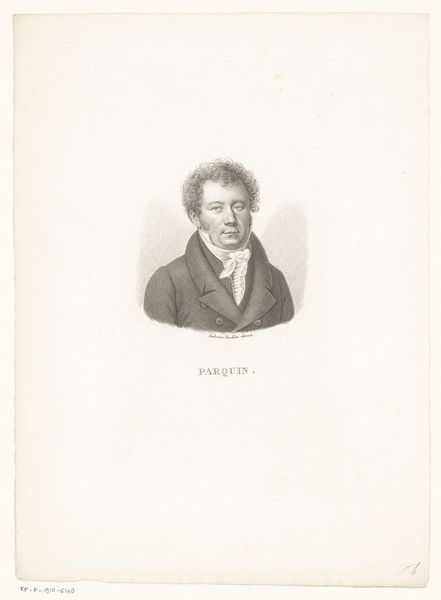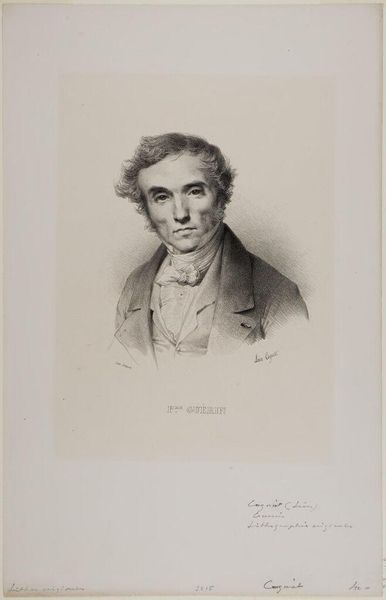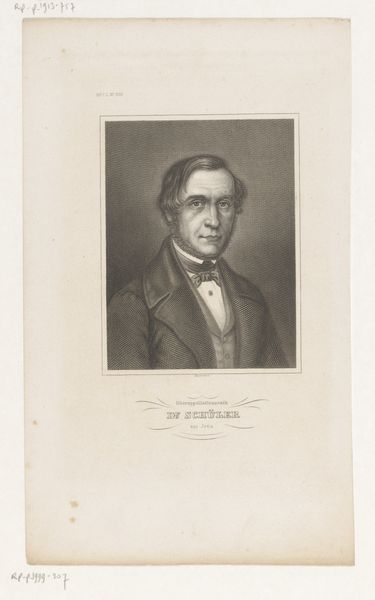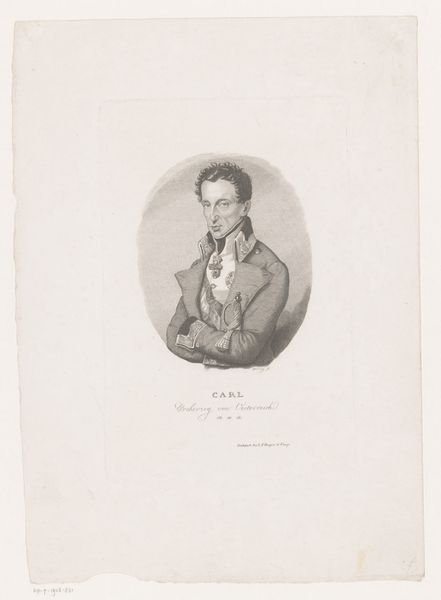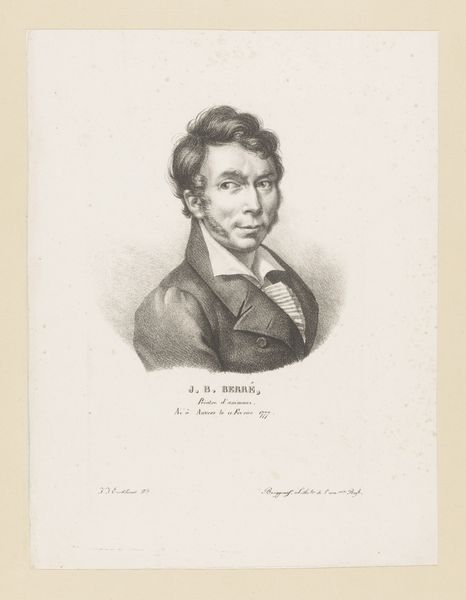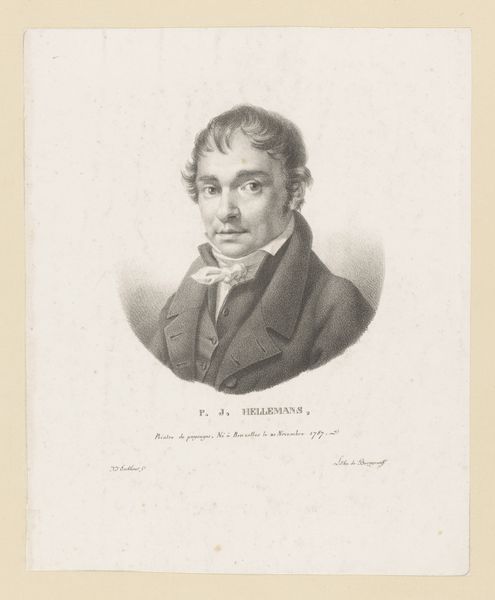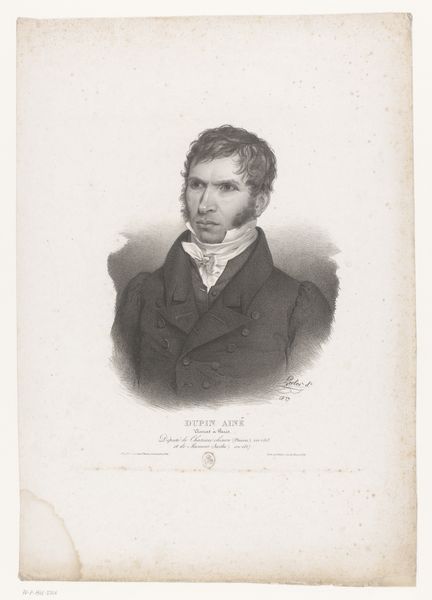
drawing, pencil, graphite
#
portrait
#
pencil drawn
#
drawing
#
pencil sketch
#
caricature
#
pencil drawing
#
romanticism
#
pencil
#
graphite
#
portrait drawing
Dimensions: height 270 mm, width 179 mm
Copyright: Rijks Museum: Open Domain
Editor: Let’s talk about “Portret van een onbekende man met de naam Marie,” a graphite and pencil drawing made sometime between 1830 and 1861 by Auguste Bry, currently residing at the Rijksmuseum. It feels so stark and formal, but something about his expression suggests there’s more to him than meets the eye. How do you interpret this work, especially considering its time? Curator: The identification of the sitter as "Marie" is immediately provocative. Could this be a comment on gender roles, or perhaps a subtle critique of societal expectations through portraiture? The Romantic era was rife with discussions of individual identity versus social constraint. Notice also the detailed rendering of his clothing versus the somewhat softened treatment of his face. How might this contrast tell us something about the artist's, or the subject's, priorities? Editor: That’s fascinating! The clothing does seem to dominate visually. Does the potential ambiguity in the sitter's identity affect how the portrait might have been received? Curator: Absolutely. Consider the rise of museums during this period and how they shaped public understanding of history and identity. A portrait, prominently displayed or privately circulated, served a very specific purpose: to construct and project a particular image. Attributing the male sitter with “Marie” unsettles any conventional reading. It raises interesting questions. Was this displayed publicly? Editor: I never thought about how the setting of viewing this may impact meaning.. Thinking about identity play and public perceptions really deepens the experience of looking at Bry's "Marie.” Thank you! Curator: My pleasure! It is through such layered analysis that we truly understand an artwork’s place in history, both art and social.
Comments
No comments
Be the first to comment and join the conversation on the ultimate creative platform.
